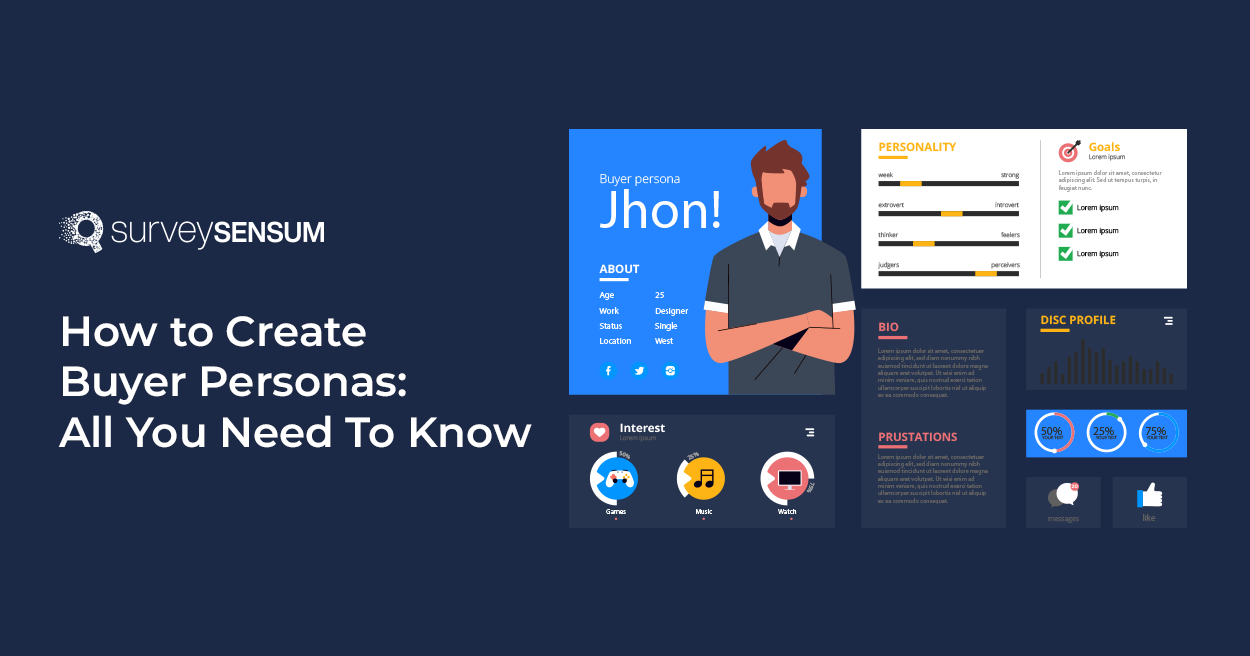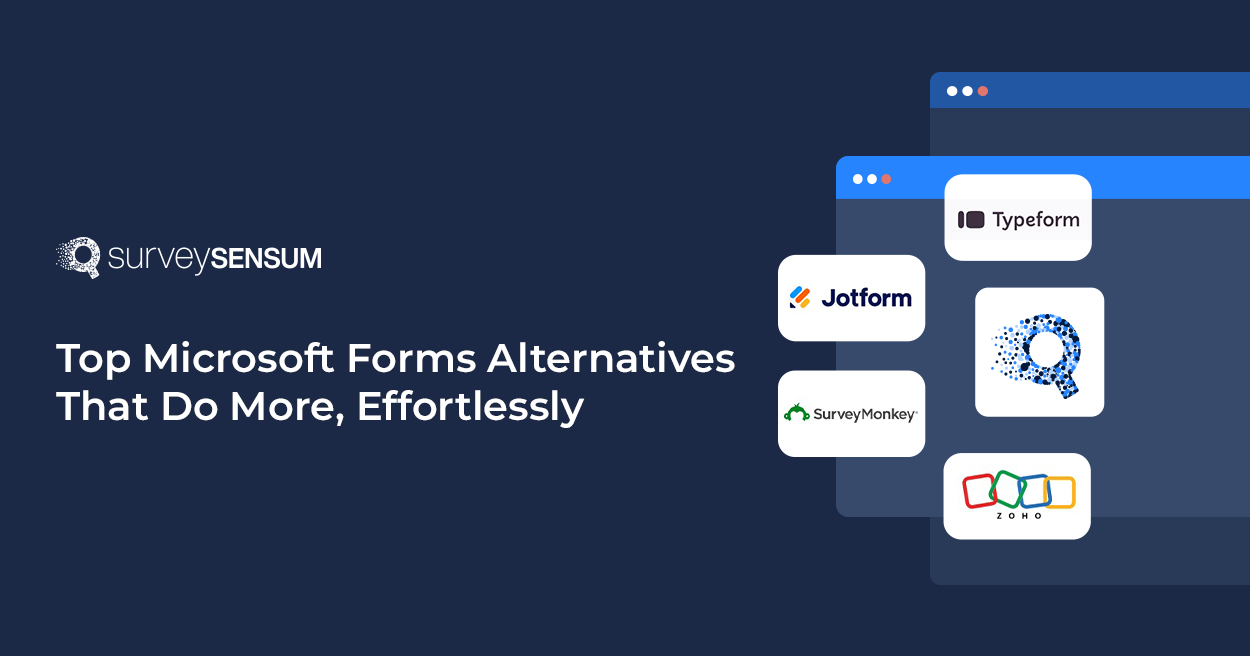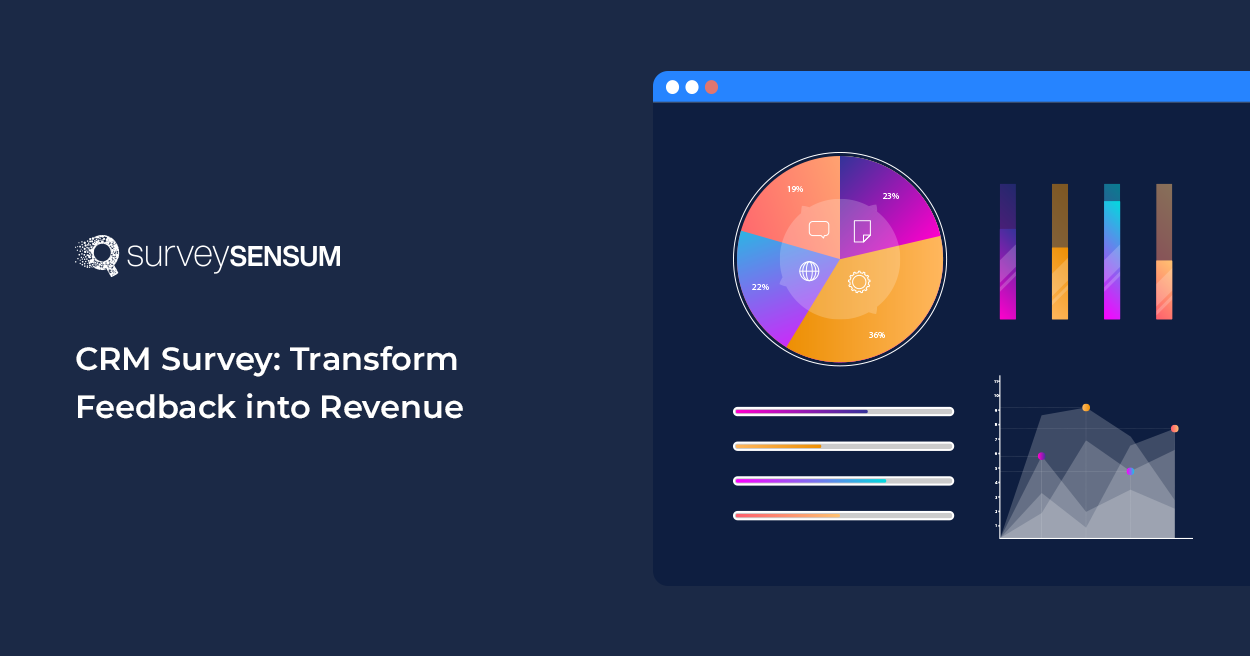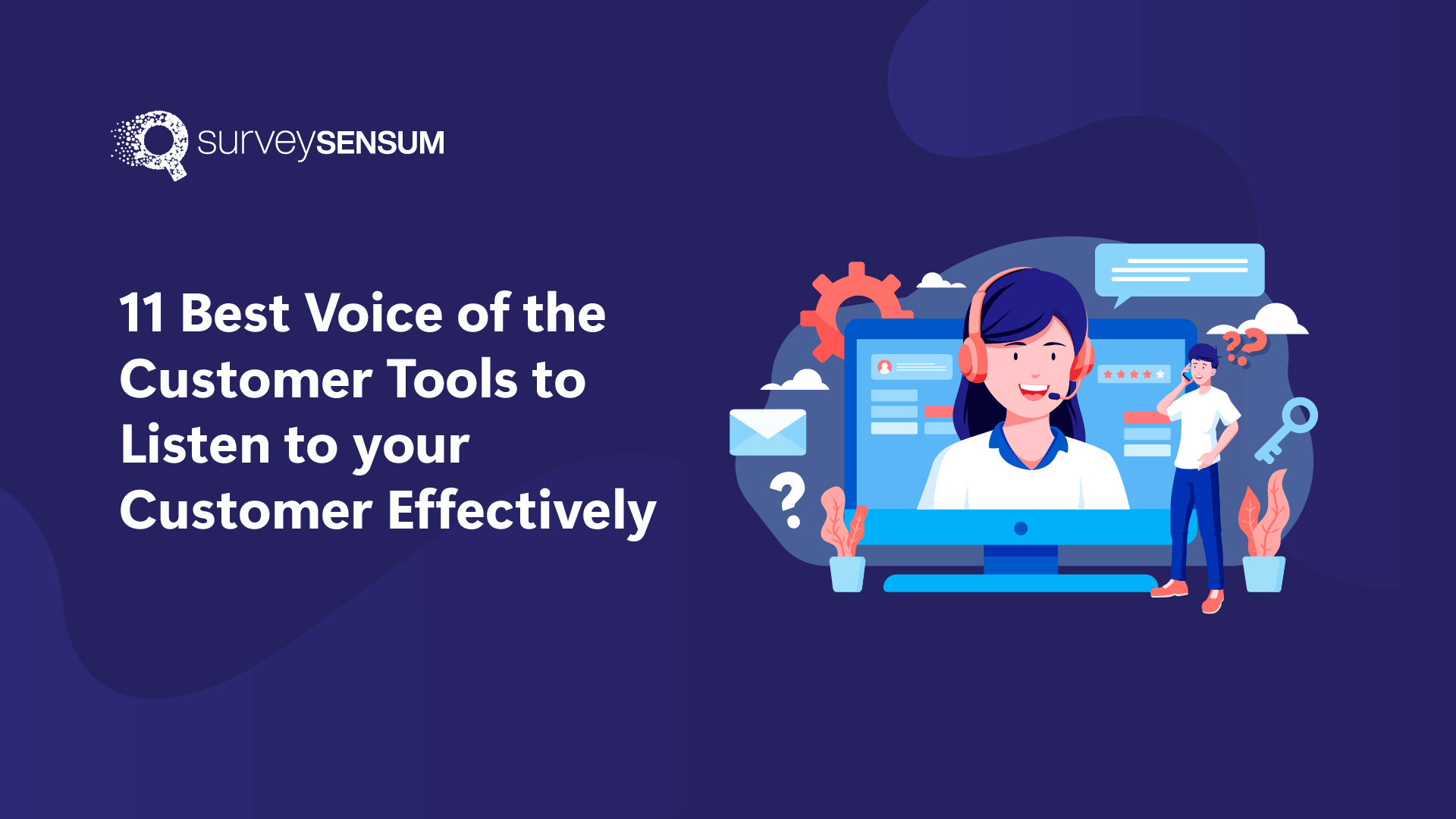
An automotive company is looking to sell its SUVs to an audience that predominantly buys Sedan cars. As a result of this, they are unable to meet their sales targets. Well, this is bound to happen! If your customers are looking for Sedan cars and you are selling them SUVs then of course they won’t buy from you!
They need to sell to an audience that fits their buyer profile! But, what could they be lacking?
— Customer Personas!
63% of marketers create content based on customer personas to enhance their strategies!
Customer Personas are used to understand your target audience better. If you don’t know them, how will you sell to them?
But how to do that? – By gathering, segmenting, and analyzing data from customer feedback. This can help you to know your customers deeply and plan and design product strategies accordingly. It is a surefire route to cracking the product-market fit!
And the way to gather all this data and feedback – an efficient and hassle-free customer feedback tool.
So, let’s understand the entire process of creating a customer persona, but first things first, let us begin by knowing what exactly is a customer persona.
What is a Customer Persona?
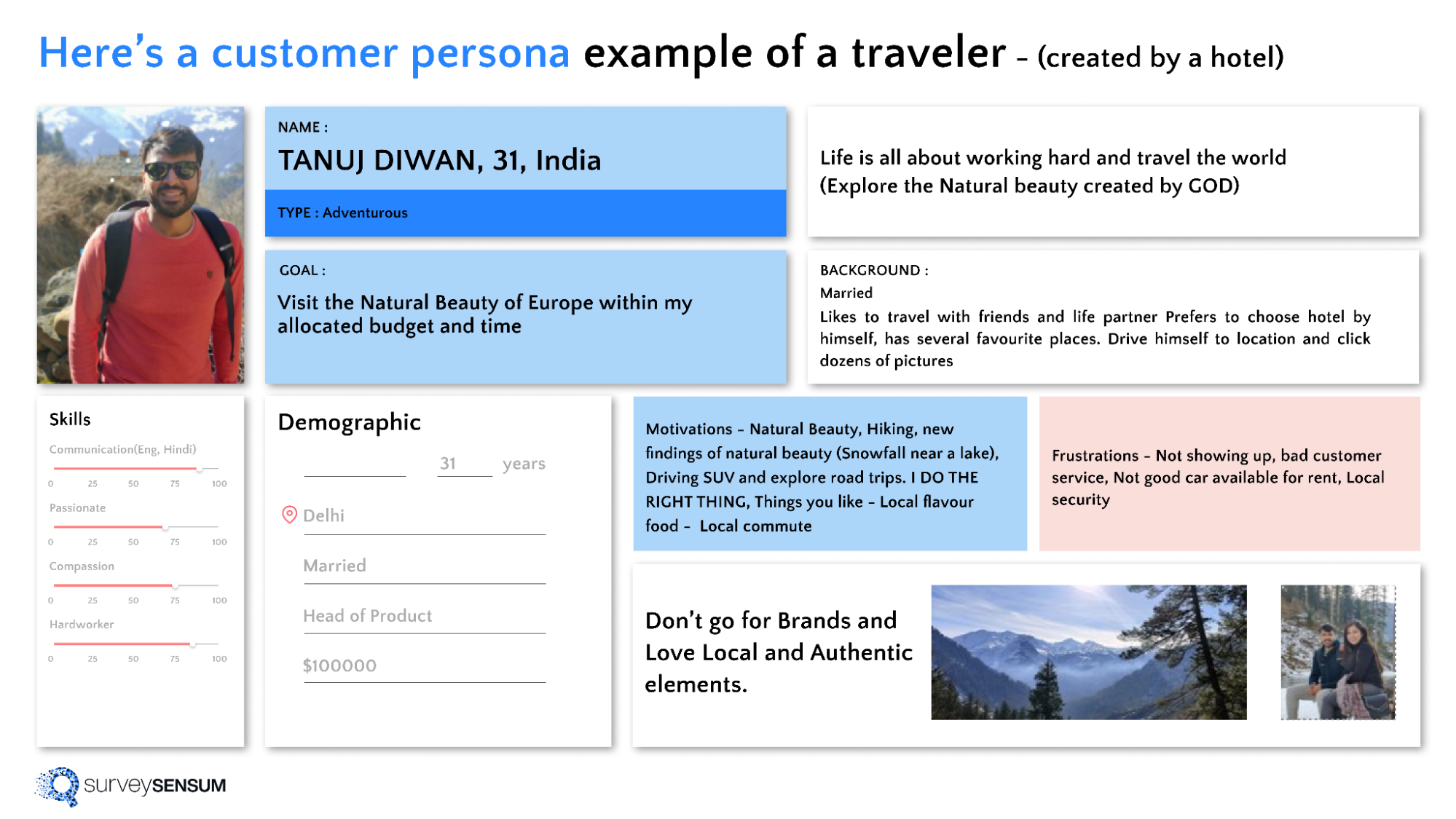
A customer persona is a fictional outline of a buyer. It is based on the information gathered about them – including their behavior, pain points, challenges, expectations, made-up name, image (stock photo), and more
They are created to help businesses understand their expectations and create products or services with the desires of their target market. Moreover, align targeted business strategies and decision-making to maximize success in the wall photo prints industry.
But, Why are Customer Personas Important?
Here are some reasons why customer personas are important for your company:
- Personalized Marketing: Customer personas enable you to understand your target audience better, helping you create targeted and personal marketing strategies. This increases the effectiveness of your business’s marketing efforts.
- Product Development: Customer personas can expedite the process of finding the right product-market fit! Through personas, companies gain insights into what features are most valued, how to position their product effectively, and where to allocate resources for maximum impact.
- Improved Communication: Understanding the communication preferences of different personas enables businesses to choose the most effective channels and messaging styles. This enhances customer engagement and builds stronger connections with your audience.
- Competitive Advantage: Businesses that invest time in creating and using customer personas gain a competitive advantage. You can outperform competitors by delivering more personalized and relevant experiences to your customers!
How to Create an Ideal Customer Persona?
Creating a customer persona involves thorough research and analysis to develop detailed representations of your target audience.
Here are detailed steps to help you create effective customer personas:
STEP 1. Conduct Market Research and Gather Data
The key to a well-crafted persona is thorough market research coupled with real data and insights. So, gather quantitative and qualitative data about your existing customer base. Use sources like surveys, interviews, social media analytics, and website analytics to collect information about demographics, behaviors, preferences, and challenges.
For example, a retail company focusing on Gen Z as its target audience, while building its buyer persona will ask questions like, “How much time do you spend on social media daily?” and “Which social media platforms do you use to shop?” to better target their marketing strategies and reduce unnecessary ad spend.
STEP 2: Segment Your Audience and Compile Data
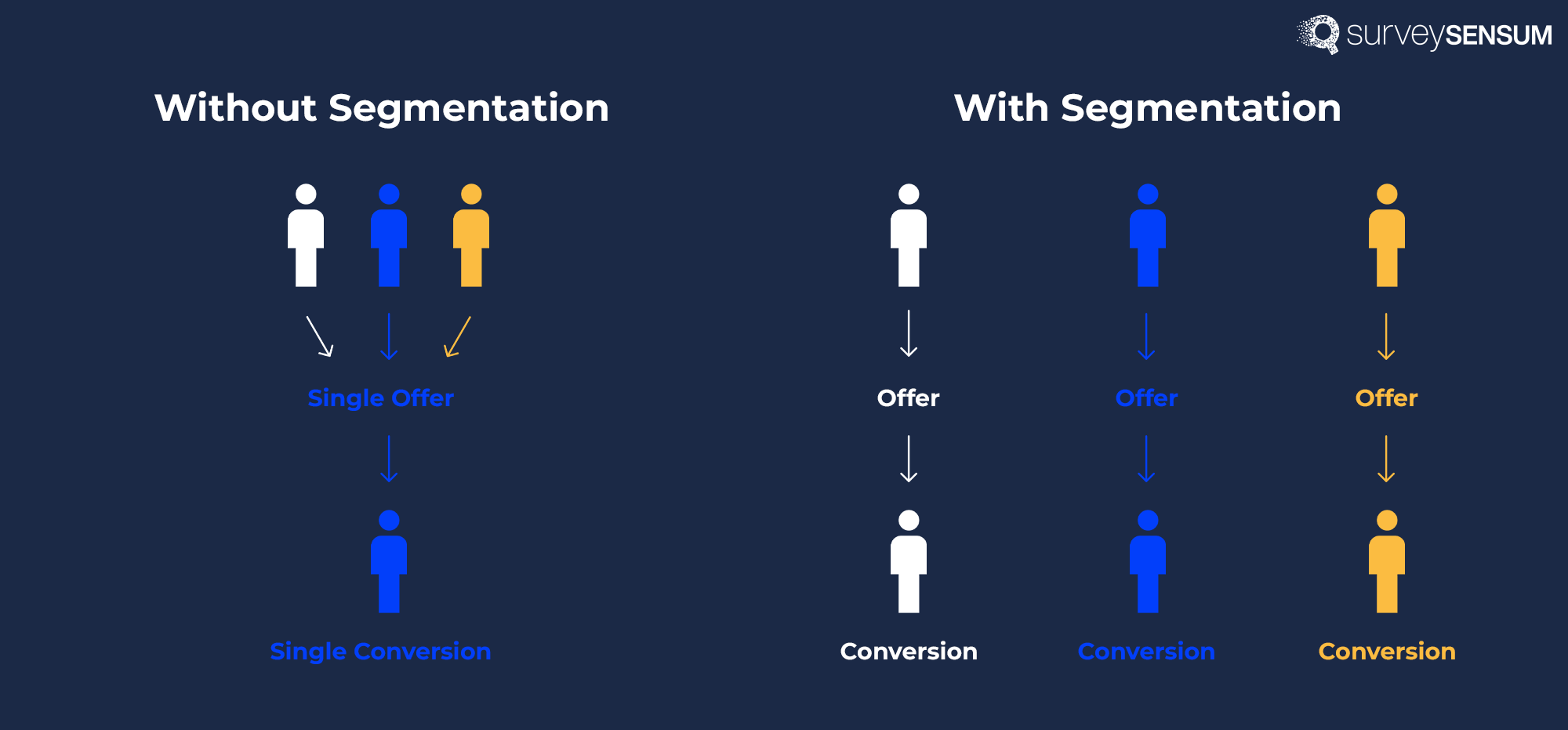
Identify distinct segments within your customer base based on shared characteristics. This target audience segmentation can be based on demographics, behaviors, or other relevant criteria. Each segment will be represented by a separate customer persona.
Organize the collected data into meaningful categories. Include demographic information (age, gender, location, etc.), psychographic details (interests, values, attitudes), and behavioral insights (buying habits, preferences). This will help you create personas that are just like your customers.
For example, the same company while segmenting its audience will focus on aspects like how some Gen Z individuals may be active on visual platforms like Instagram and Snapchat, while others may prefer content-driven platforms like TikTok—especially if they’re aiming for fast growing in TikTok followers due to TikTok’s rewarding algorithm. Or how some segments may be trend-focused, while others may prefer classic or minimalist styles.
STEP 3: Create Persona Profiles
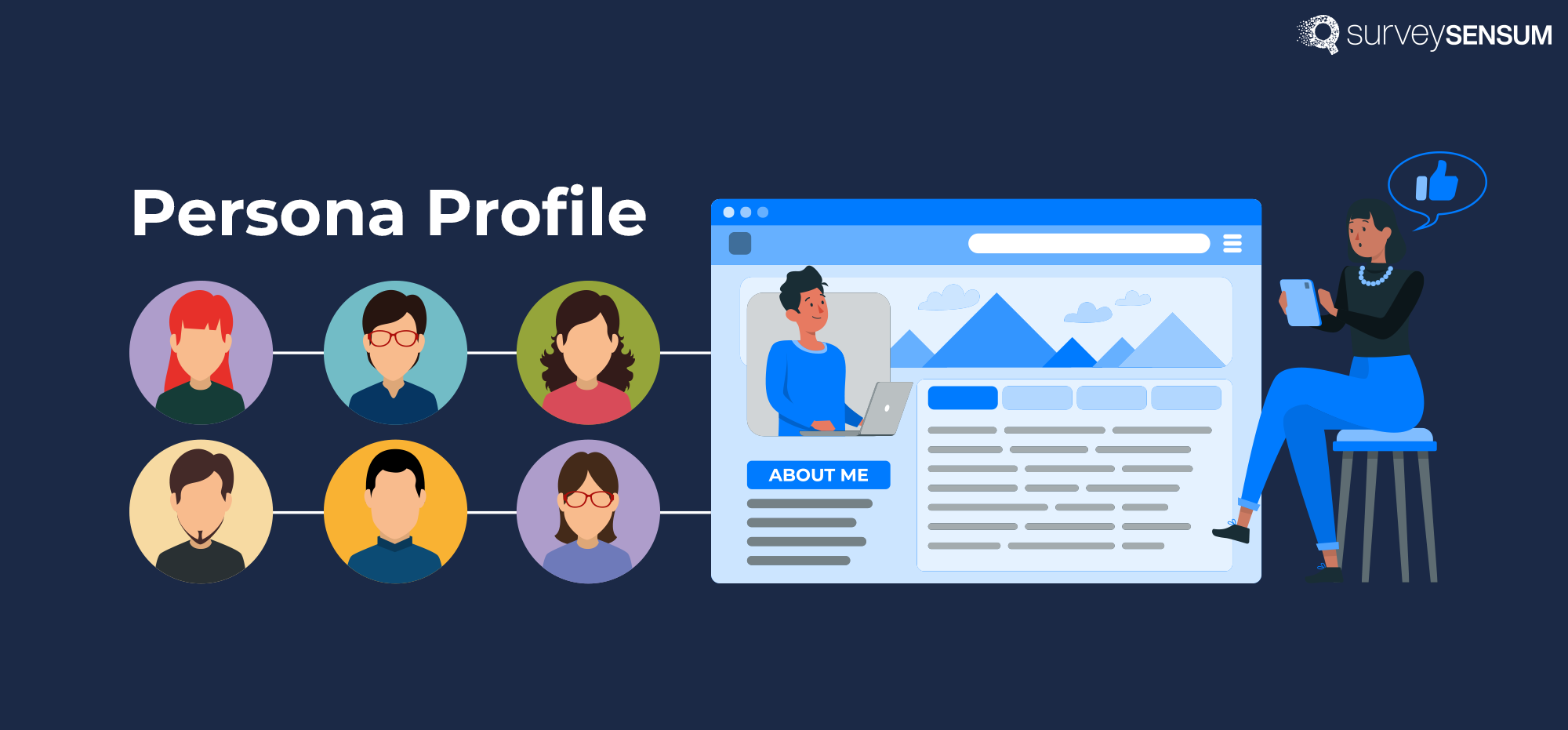
The truth lies in detailing! You need to create your personas with utmost attention and detail. This should include a fictional name, job title, and a representative image (you can use stock photos). Dive into the persona’s background, goals, challenges, and preferences. Don’t forget to provide a narrative that humanizes the persona.
For example, The retail company will employ social listening to create a highly detailed persona which can be along the lines of Zoe, who is a tech-savvy and socially conscious individual. Zoe is constantly connected online to stay updated on trends, connect with friends, and discover new products. Zoe is highly influenced by her peers’ opinions and recommendations, often relying on reviews and social media for guidance on purchasing decisions, etc.
Now that you know the importance of Customer Personas, why wait? Conduct research and create customer personas today with SurveySensum!
Share the drafted customer personas with key stakeholders, such as marketing teams, sales teams, and product development teams. Gather all the feedback and ensure that the personas align with the organization’s overall strategy.
At last, ensure that the final customer personas are widely adopted across relevant departments within your organization. They should guide decision-making in marketing, product development, customer service, and other areas.
Now in our example, the retail company would then send its catalog of customer personas across departments and funnel its focus and resources on strategies like influencer marketing, content partnerships, etc.
These steps should help you in building customer personas that are tailored to your organization’s needs.
FAQs on Customer Persona
1. What is the goal of the customer persona?
The goal of creating customer personas is to develop a deep understanding of your target audience by constructing detailed and semi-fictional representations of your ideal customers. These personas are based on real data and insights gathered from your audience.
2. What are the 4 customer personas?
The specific number of customer personas may vary based on the business and its complexity, a common approach involves developing four or more distinct personas. These personas typically represent various segments of the customer base, encompassing diverse demographics, preferences, and behaviors.
3. Which tool is used for customer persona?
Creating customer personas often involves a combination of qualitative and quantitative research methods, and there isn’t a specific tool designated solely for this purpose. However, businesses commonly use a variety of tools and resources to gather the necessary data for buyer persona development. For example, surveys, questionnaires, interviews, etc.
4. How often should customer personas be updated?
Customer personas should be regularly reviewed and updated, especially when there are changes in market trends, customer behavior, or business offerings. This ensures that personas remain relevant and reflective of the evolving customer base.
Conclusion
Customer personas, therefore, are invaluable tools for understanding and connecting with your target audience on a deeper level. Through meticulous research and analysis, the creation of detailed personas allows companies to humanize their customer base, creating strategies to align with diverse needs and preferences.
To achieve this, you need to look no further than SurveySensum! SurveySensum serves as a robust tool for data collection and segmentation of your customer base, with AI-driven features like text analytics and consultation, you can create your customer personas and help your business soar to greater heights of customer satisfaction and loyalty!






